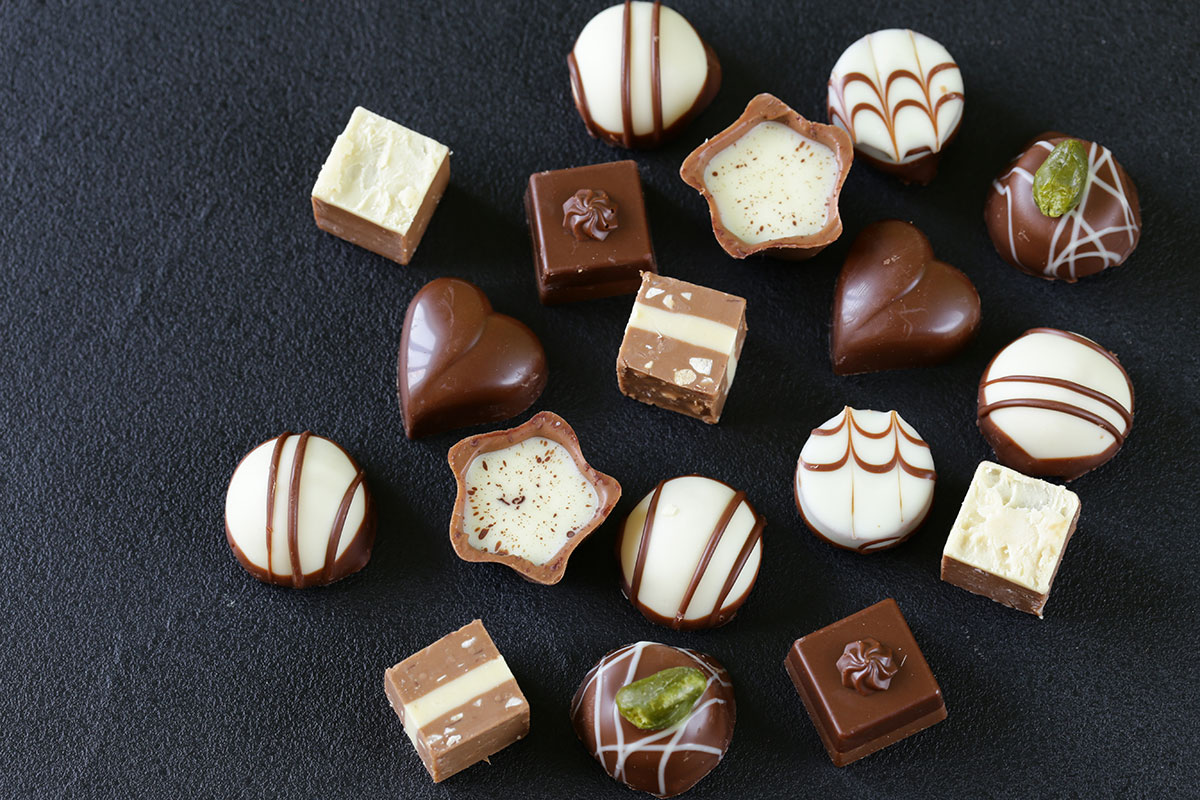Almost every season, in every country, there are traditional holidays during which chocolates are one of the most desired food by both adults and children. We’d like to present some holiday traditions where chocolate is always on the menu:
Valentine’s Day
As the day for celebrating love, Valentine’s Day (which has been celebrated since Roman times) has a strong association with chocolate, which is the perfect gift for someone special, whether s/he is family, a friend, or a beloved.
Celebrated in many regions of the world, the day is widely celebrated in North America, where it is common for men to give gifts of chocolate to their loves. In Japan, however, it is the girls and women who do the chocolate gifting to the special boys or men in their lives.
It is popular on Valentine’s Day because chocolate acts as an aphrodisiac. Eating chocolate increases the brain’s production of endorphins (happiness hormones) and serotonin (the relaxation and well-being hormone), which, in turn, enhances our pleasure, increases our libido, and heightens the sensation of love. As well, chocolate contains theobromine, which powerfully stimulates the central nervous system and increases sexual desire, and phenylethylamine which is associated with physical desire.[1]
Chocolate brings out feelings of affection in anyone who consumes it and puts elevates mood for the whole day and night.
Easter
Easter has been associated with the chocolate tradition for centuries. In pagan times, cacao seeds had not yet been discovered by Europeans and Easter eggs were painted brown to symbolize rebirth and fertility. By the 17th century, cacao had been discovered and the Europeans soon loved the delicate, sweet taste. Soon, Easter eggs were covered with chocolate and the rest, as they say, is history.
Today, there are many kinds of chocolate eggs, figures, and treats are made specifically for Easter.
Halloween
In most people’s minds, Halloween involves scare pranks and movies, costumes, carved pumpkins and gourds, ghouls, ghosts, and skeletons. But for children, the reward for being scared going Trick or Treating for chocolate and other treats.
Halloween grew out of ancient Celtic harvest festivals, which may have had pagan roots. Over the centuries, Halloween has developed into a commercial holiday where both adults and children wear costumes and children go Trick or Treating at their neighbors’ homes. One of the most popular treats given out or left on doorsteps is chocolate.
The Day of the Dead
A Mexican holiday, Día de Los Muertos, or The Day of the Dead, takes place on November 1 and 2 and involves spending time at cemeteries to honor and respect the dead. The holiday theme involves making shrines for the departed souls and displaying skeletons and skulls at the cemetery. It is not a morbid celebration, however; it is a jovial time.[2]
In Mexican culture, death is not the end of life but just part of the life cycle and everyone should live life to the fullest. Thus, the festive mood permeates every aspect of life during the two-day celebration. The festival began during the Aztec empire and the event continues to thrive.
Homes are decorated in bright colors and the favorite foods of the dead are consumed. Once the cemetery visits are over, families indulge in a sumptuous meal that also involves exchanging sweets. Today, chocolate is the most popular dessert and gift for family members and friends.
Hanukkah
Hanukkah is a Jewish holiday also known as the Festival of Lights. It usually falls sometime in late November or early December. Hanukkah lasts eight days and has been celebrated for over 2000.
Hanukkah means dedication and honors one of the great miracles in the Jewish faith when the Jewish people overcame the Greeks in a battle to restore their rights to practice their religion. The victory has been celebrated by the lighting of candles held in a menorah for eight days ever since.
Hanukkah is also a time for special celebratory foods and exchanging gifts. Almost every Jewish home has specially made food to serve family and friends, with many sugary treats. For those who do not like or choose not to make these sweets, there is always chocolate on hand. Today, chocolatiers make delicate coin-shaped chocolates wrapped in foil for Hanukkah; they are a symbol of the traditional gelt – or tip — that was once given to itinerant workers.[3]
Diwali
Diwali is an Indian religious holiday celebrated globally. Diwali is also known as another Festival of Lights.
In the past, homeowners placed rows of clay lamps with burning candles on both inside and outside their homes for five days. The lights represent “victory of light over darkness, good over evil, and knowledge over ignorance.”[4] Today, the lamps have been replaced by strings of electric lights and LEDs. Each of the five days of Diwali has a special religious significance.
Over the past few decades, Diwali has become popular and many with other faiths and beliefs now join in celebrating this holiday.
Indians spend close to a month preparing in advance for the festival. One of the features of Diwali, like Christmas, is the tradition of cooking traditional Indian foods and having lots of desserts and sweets. Each evening, families and friends gather to enjoy the spicy foods followed by sugary treats. Over the years, the sugary Indian desserts have slowly started to be replaced with chocolate, which many prefer.
Christmas
Christmas without chocolates just doesn’t seem right. The two have a long history which stretches back several centuries. Sweet desserts have always been a tradition at Christmastime but things changed when Europeans discovered the cacao seed in other regions of the world.
Initially, chocolate was only served in liquid form and was only available to the rich, but by the mid-19th Century, Europeans started making it in solid form and selling it to many. In the 20th Century, chocolate-shaped Santa and elf figurines became common, the industry was in full bloom, and chocolates were readily available globally.
Since then, at every Christmas dinner or party, many types and forms of chocolate are served. In addition, offering chocolates as gifts is a very common practice. For the entire month of December and early January, chocolates of all types can be found in the homes of people who celebrate Christmas.
Conclusion
There is no question that chocolate is loved by most people, but diabetics and others needing or wanting to avoid sugars must be careful about chocolate consumption. Blood sugar control is vital for diabetics to avoid health complications. Fortunately, Ross Chocolates produces a wide variety of No Sugar Added chocolates in several flavors that are safe for diabetics and others to enjoy year-round.
[1] n.a.(June 23, 2016). Chocolate As Aphrodisiac. Retrieved from https://blog.vaninicioccolato.com/en/chocolate-as-aphrodisiac/ on October 16, 2019.
[2] n.a.(n.d.). Day of the Dead. Retrieved from https://en.wikipedia.org/wiki/Day_of_the_Dead on October 16, 2019.
[3] Prichep, D. (December 13, 2014). Hanukkah History: Those Chocolate Coins Were Once Real Tips. Retrieved from https://www.npr.org/sections/thesalt/2014/12/12/370368642/hanukkah-history-those-chocolate-coins-were-once-real-tips on October 16, 2019.
[4] Yarayanan, V. & Helligman, D. (2008). Celebrating Diwali. National Geographic Society. p. 31. ISBN 978-1-4263-0291-6.






0 Comments